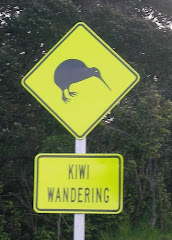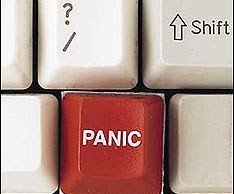
The mood is festive, even though the skies have opened up and the rain set in outside. The hum of chatter gives way to splotches of laughter. Pockets of mayhem begin to attract wandering eyes. The clowns!
I was not really much of a fan of clowns until Cirque. Our first Cirque experience was the ethereal Alegria with its beautiful, lonely clown Slava, chasing trains in the snow. At this point clowning took on a whole new meaning for me. They became the stuff of dreams, skillfully combining comedy with poignancy and doing it with so much heart. Slava now has his own touring act called, appropriately, 'Slava's Snowshow'. We took the boys to it when it first came to New Zealand and were captivated all over again. It just happened to be in town again at the same time we were and although we didn't go, my sister and her young family did- and were duely enchanted. It remains one of the best shows I have seen, and we have seen many, many different stage productions over the years. If you get the chance it should not be missed by kids of all ages. Here is a taste I found on the ubiquitous YouTube:
The clowns of Dralion were more earthy than Slava, more slapstick, but still very clever and just as entertaining. Their interludes, subtly used to introduce the following act, included a 'character role', a person from the audience singled out before the show started and eventually coerced on stage- to read the safety instructions. He stumbled and laughed and kept an anxious eye on the bothersome clowns- who were usually up to no good. His reactions were priceless, his nervous giggle infectious, his incorporation into the act almost seemless and the ultimate realisation that he was in fact 'a clown' - unanticipated- for this audience member anyway.
All of Cirque du Soliels circuses are unique but Dralion is extra special because of its utilisation of Chinese acrobatic traditions and the incomparable cheeky Dralion- a combination dragon-lion dressed very much like the floppy eared, fringed Chinese Lions we are now so used to being amused by. Cirque du Soleil's strength, underneath all its spectacular costumes, unique music and fantastical grandeur, is the performers. A polished and exitable lot, Cirque's acrobats can often be seen during their acts with the concentrated and then jubilant expressions only attained when a new stunt is tried and, using the mixture of performance enhanced adrenaline and the power of the collectively held breaths of the audience, suceeded. Dralion was no different with even the more solemn and earnest Chinese performers pushing the boundaries of their stunts to even more seemingly inhuman levels, their faces tripped from intent to delight as they turn to accept the audiences delight. The trust they have in not only each other but also in the audience at this point invokes a sense of family and involvement that makes them a pure joy to watch. They need us as much as we are in that moment needing them.
From the first Cirque we saw the unique acts have always drawn the most excitment and enthusiasm, particularly those involving the trampoline, and Dralion was no exception. The 6 jumpers leapt from huge heights onto trampolines, bounced back up and scaled the walls like Spidermen - and women- on speed in combinations that got increasingly crazier leaving you alternately gasping at the audacity and fervently wishing it would be your turn next.
I can't wait for the next one that comes within cooee of our nomadic lifestyle. Until then heres a taste of the incredible gravity defying hoop act from Dralion 2008/9- again from YouTube:


















